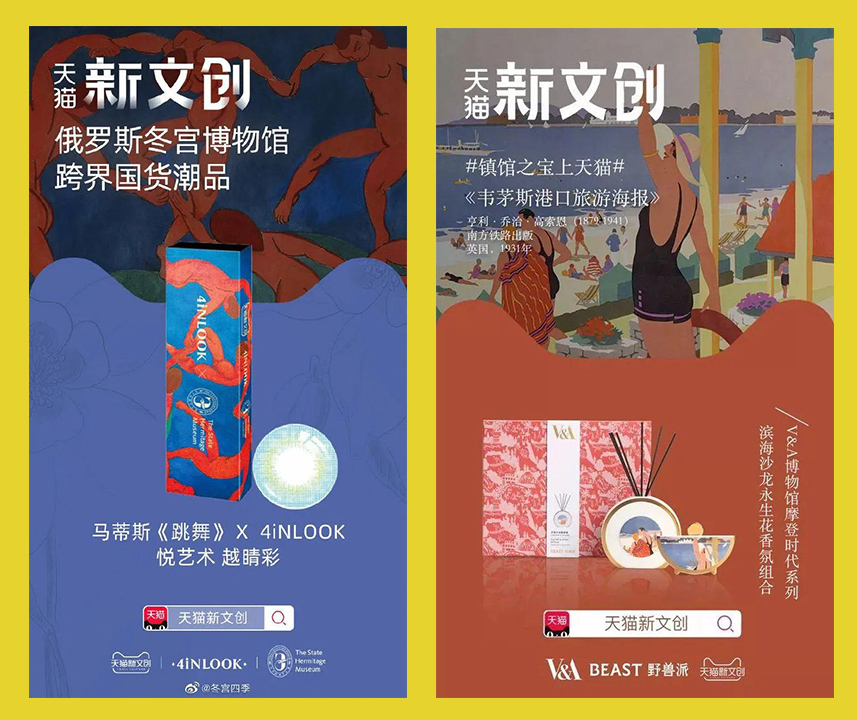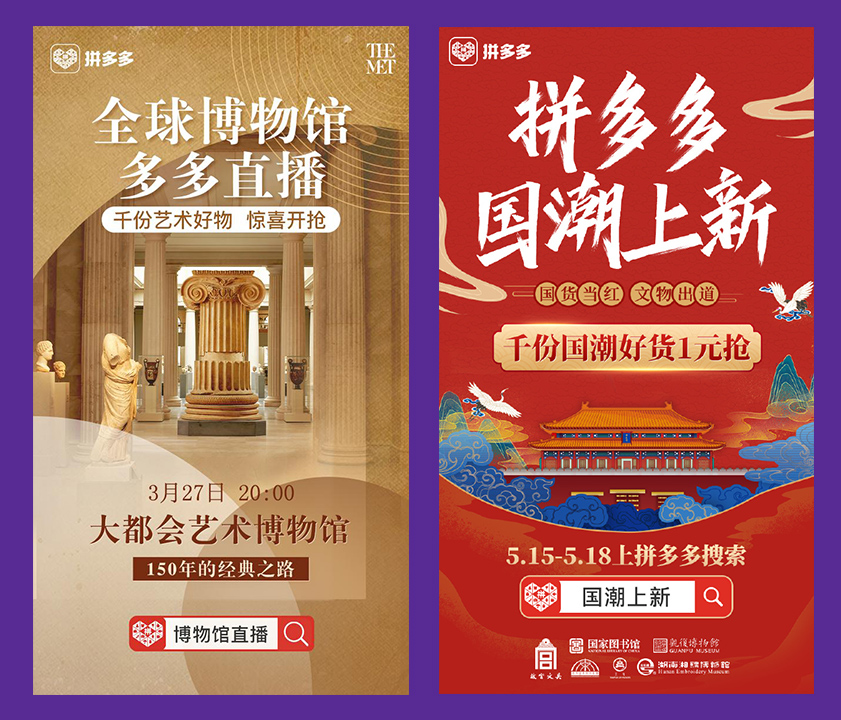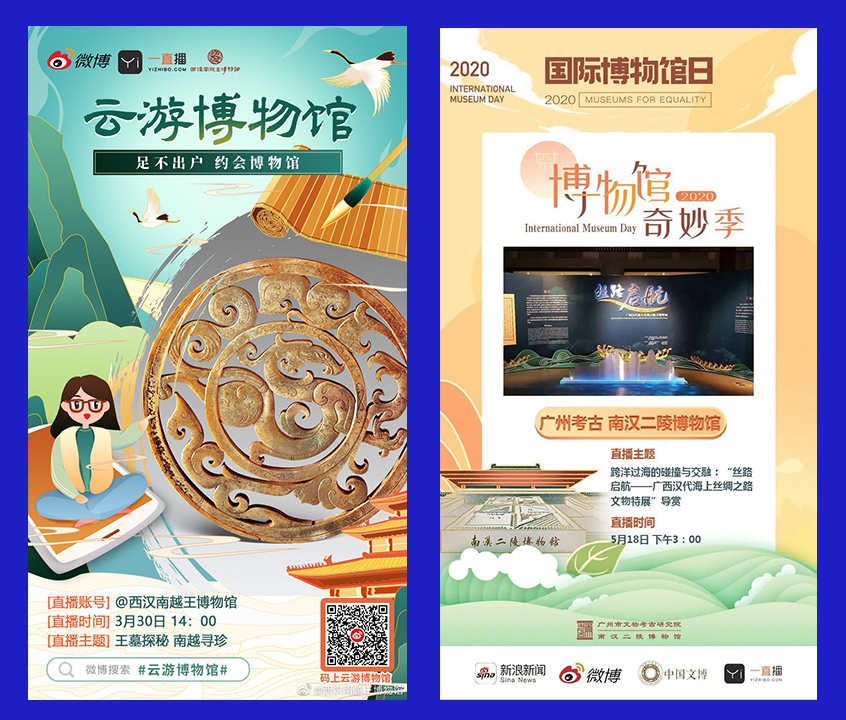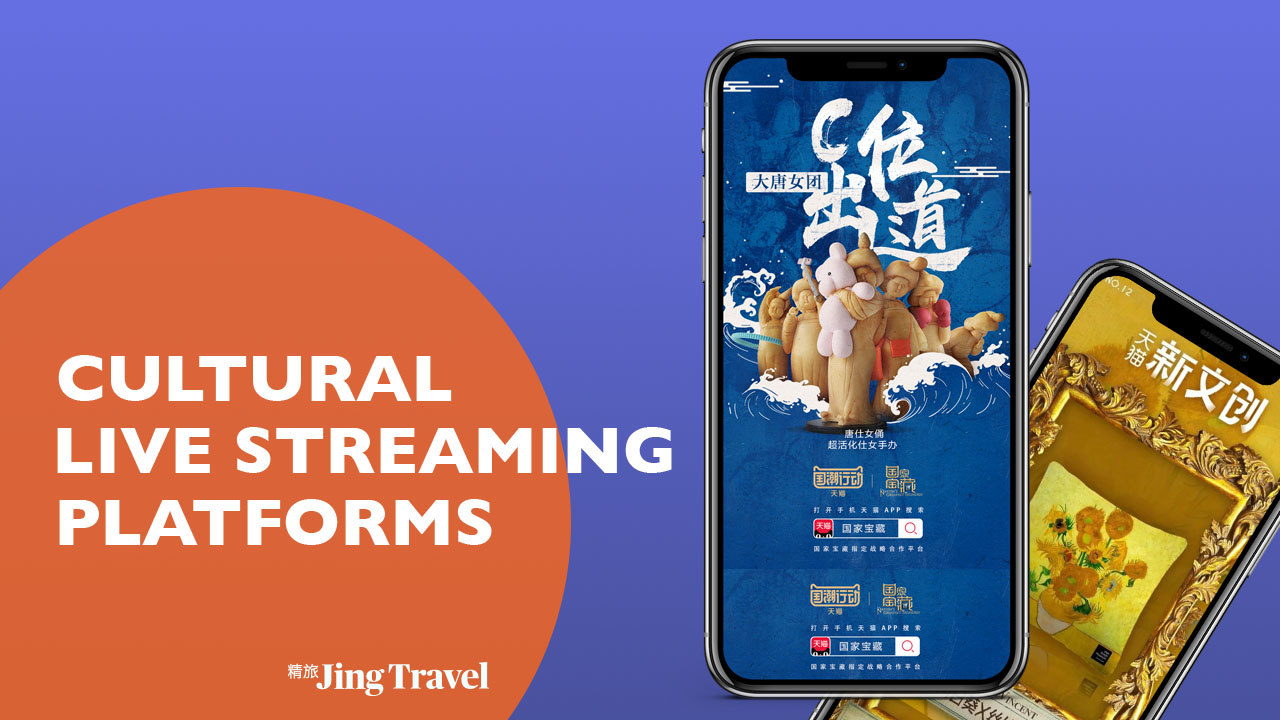This is the second in a two part feature on cultural live streaming. You can read part one here.
Live streaming has emerged as China’s most important digital trend in 2020.
From art galleries to giant state museums, real-time broadcasting swiftly became a key communication tool under coronavirus-imposed lockdown. The practice has continued as cultural spaces across China have reopened, turning a trend into a long-term engagement channel.
Here, JT breaks down China’s major live streaming platforms with ambitions in the cultural sphere.
Taobao Live
The pioneer and titan of China’s e-commerce live streaming scene
Bio
Alibaba’s dedicated live streaming channel was launched in 2016 with the goal of supercharging the number of merchants on Taobao, a leading B2C and C2C e-commerce platform. It’s home to some of China’s best loved live streamers and is unrivaled in terms of audience size and number of broadcasts; 560 million users as of March 2020 and 15,000 live streams per week.
Cultural Connection
Taobao Live’s expansion into an ever-broadening array of product categories makes selling cultural goods, known in China as wenchuang, a natural development. In 2019, Tmall launched an initiative aimed at developing products with 100 global cultural institutions. Under lockdown, it platformed numerous cultural live streams — notably “Virtual Spring Outing” in which eight Chines museums, including Tibet Potala Palace and Nanjing Museum, took part. The presence of more than 60 cultural institutions on Tmall, including the Palace Museum, the British Museum, and the National Museum of China, will see this trend of live streaming e-commerce grow further.

Image: tmall.com
Pinduoduo
The social e-commerce upstart challenging China’s powerhouse platforms.
Bio
The name Pinduoduo says it all; together, more savings, more fun. In under five years, the group buying app has become China’s third biggest e-commerce player with a $114 billion market value. Its formula for success entails turning bargain shopping into a form of social entertainment. What began as a platform for flogging groceries and household goods to users in lower-tier cities now sells smartphones and luxury cars to its 683 million active annual users. It made live streaming available to all merchants in January 2020.
Cultural Connection
Pinduoduo’s venture into the cultural sphere is rapidly gaining momentum. In March, it began working with New York’s Metropolitan Museum of Art and six Chinese museums to live stream exhibitions, develop virtual tours, and promote gift shop merchandise. It’s also begun partnering with nearly a dozen foreign embassies and consulates to sell heritage products via live stream — Thailand sold durian, Denmark butter cookies, and Latvia specialty alcohol — a smart move given online sales of agricultural goods totalled $58 billion in 2019.

Image: weibo.com
Weibo Live Streaming
The preeminent microblogging site and catalyst for nationwide trends, often-dubbed China’s Twitter
Bio
Founded by Sina Corp in 2009, Weibo is one of the longest standing and most dominant presences in China’s social media landscape. It has 550 million monthly active users and close to 800,000 major content creators including prominent celebrities and Key Opinion Leaders (KOLs). It introduced live streaming functionality in 2016 and acquired leading live streaming platform Yizhibo in 2019.
Cultural connection
Most Chinese cultural institutions are longtime users of Weibo which made it a convenient platform to maintain audience engagement via live stream under lockdown. It took part in platforming and supporting live streams across China for International Museum Day, May 16.

Image: Weibo.com



